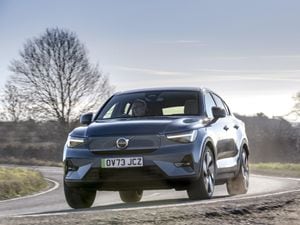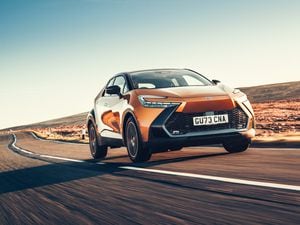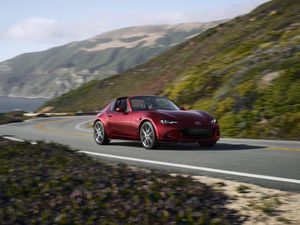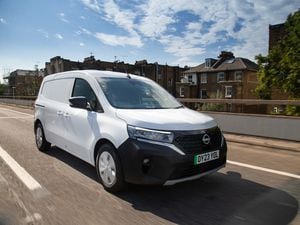First drive: The L200 is the pick-up truck Mitsubishi hopes will entice buyers out of SUVs
Mitsubishi has updated its hugely popular L200 pickup truck. Will it be enough to tempt buyers out of cars and SUVs? Darren Cassey finds out…

What is it?

Mitsubishi might have found itself a winner a few years back as government tax incentives made its Outlander plug-in hybrid one of the most enticing low-emission models on the market, but its bread and butter has traditionally been commercial vehicles.
The L200 has been an ever-present in the Japanese car maker’s line-up for more than four decades and still makes up about a third of its UK sales – and about half of European sales. Here it’s been updated for its sixth generation, and Mitsubishi hopes it’ll tempt buyers out of cars and SUVs – that’s a big ask of a pickup truck.
What’s new?

This has been a fairly comprehensive update for the L200, which gets a new look that brings it closer in line with the rest of the Mitsubishi range, and includes new technology such as LED lights. Inside, it’s been given a going over to make car owners more comfortable switching across, while the extensive safety kit on offer at higher trim levels is genuinely impressive for the price point.
The diesel engine has been worked on to make it more refined and more economical, making the car more comfortable to drive on the road and lowering running costs. However, arguably more important changes come in the form of a strengthened chassis and updated suspension that make the pickup handle better, particularly when carrying a heavy load.
What’s under the bonnet?

The turbo-diesel engine has been downsized slightly to 2.3-litres, and while it’s about 15bhp down than before at 148bhp, refinement and economy are said to be improved. The most important figure for commercial users is likely the decent 400Nm of torque, which proved useful when we tested it in heavy towing situations.
When run through the latest WLTP emissions tests, fuel economy is measured at 32.1mpg for the six-speed manual and 29.1mpg for the six-speed automatic, figures that were easily attainable during our test of the truck. CO2 emissions are rated at 231g/km. The L200 now gets start/stop technology as standard and has a large AdBlue tank that Mitsubishi claims is the biggest in its class.
What’s it like to drive?

Compared with the old model, the L200’s on-road manners are much improved. It handles better, suffers less from wind noise and is more comfortable over road imperfections. The automatic gearbox is also very responsive, and the engine is very quiet at cruising speeds. It’s even pretty easy to tool about town in thanks to its narrow frame and high bonnet.
Commercial buyers will find this to be one of the more refined pick-ups, only behind the VW Amarok, which isn’t quite as capable off road, and the more expensive Mercedes X-Class. However, those jumping out of a car will likely find the wind noise a little too intrusive still, while the fidgety ride could grate if you never have the need to carry heavy loads.
On the off-road course we tested the L200 on, it coped admirably. The only difficulties came from the road-specification tyres struggling with the slippery mud, with the Mitsubishi’s systems doing a fantastic job of hauling us up steep inclines and across rutted terrain despite the lack of grip. Meanwhile, testing its towing capabilities – up to 3.5 tonnes on a three-axle trailer – it was utterly unfazed.
How does it look?

From a distance the L200 might look quite similar to its predecessor but look more closely and you’ll realise there’s actually been quite an extensive overhaul. It’s most noticeable up front, where the headlights are now slimmer, while the blades either side of the grille give it a more purposeful appearance and bring it in-line with the rest of the Mitsubishi range.
The bonnet has also been raised 40mm to aid visibility from the driver’s seat, there are chunkier wheel arches and new LED rear lights, too. The overall effect is one of enhancement rather than overhaul, but there’s no denying the L200’s nip and tuck has improved its handsome looks.
What’s it like inside?

Mitsubishi might want to ease the jump from road car to pick-up truck for private customers, but the L200’s interior still feels rather agricultural. The leather-upholstered steering real is good quality and well-sized, but the instrument binnacle’s dials feel a touch outdated with their central LCD screen. Meanwhile the infotainment system screen could do with being a little larger, and the slew of chunky buttons give a decidedly retro air to the cabin.
That being said, easy access buttons are actually quite welcome in the age of diving deep into touchscreen menus just to change the air conditioning temperature, and those buying it for commercial purposes will likely welcome the few frills provided. It’s definitely a step up from the old model, but those considering one after owning a car or SUV might be taken aback.
What’s the spec like?

Specification is Mitsubishi’s selling point with the L200. It reckons that it’s better equipped than each of its rivals at any given trim level, and it’s hard to argue with the amount of kit on offer and the corresponding value form money.
The entry level 4Life Club Cab model starts at £21,515 exc. VAT and includes keyless entry, air conditioning and an ‘easy select’ four-wheel-drive system with additional rear differential lock. The double cab adds cruise control and electric rear windows for £22,715 exc. VAT.
Kit continues to be added through the Warrior and Barbarian trims, and by the time you get to the top spec Barbarian X, there’s a list any SUV buyer should be happy with, including leather upholstery, automatic LED headlights, LED front fog lamps, off-road mode and a slew of safety kit. Prices for this trim start at £32,200 exc. VAT.
Verdict

Look at the Mitsubishi L200 as a purely commercial prospect and it makes a lot of sense. Its off-road capabilities are impressive, and its towing capabilities are fantastic, for example. The fact it can do all of this while feeling more refined and offering impressive equipment levels without breaking the bank makes it an appealing prospect.
Despite those points though, those looking for something that’s merely a practical alternative for an SUV might still struggle to make that leap.





